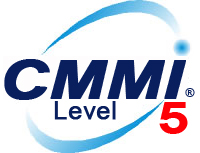There is spurt of doomsday predictions for Indian IT service. There are many bloggers emerging. All are stating one reality. The outsourcing party is over. No more easy money.
IT/R&D service is the past. The entrepreneurship is the future. All the middle managers are white elephants and are a burden. They are the reason the industry is in bad state.
What are the suggestions I hear?
- Fire the entire middle management. It is not competent. Given the effort booking mode of this business, the middle managers are only into counting heads and no other value of significance.
- These middle managers are incompetent to give a business or technical solution. It is vital to get more business for the organization.
- Bring up people who are technically sound and also can do routine operational tasks in parallel.
In fact all these are good suggestions. But are we looking at the source of the problem?
These are already happening across the Indian organizations. In places like US, there is loud noise about H1Bs taking over jobs. However, the phenomenon looks little more generic. Younger and cheaper workforce taking over jobs of experienced ones who are on the wrong side of cost curve and skill relevance.
The big question. Why are the skills relevant for business are not getting developed as experience increases?
Major part of the answer is in setting and managing the expectations. As experience grows, most of the people are expected to ‘do more’, just ‘normal work’. In “mature” organizations, everything is “metrics based and measured” and hence “objective”.
We know that “most mature” organizations have to prove to the world that they are mature. Essential for branding. Proving requires lot of data. Most of the times, the people who want to “do more” keep doing these.
Maturity requires standards. SEI CMMI is the most popular model. It very well defines framework for maturity level till 5.

To achieve each level, there is increasing level of organization overheads. Lot of planning, preparing lot of status updates, reviews, metrics presentation, checklist creation, auditing, analyzing metrics, defining organizational control actions, tracking and maintaining actions.
At first look, achieving level 5 (Project based AND Defined AND Measured AND Optimized based on measured data) is the best bet. So far, the business benefits of achieving level 5 were talked about. Surprisingly, there was no debate of the indirect cost of achieving this.
I personally have lot of respect for CMMI model and the way it is helping the industry. It rewired my brain for better.
However we should consider these costs of Level 5 too:
1. Most experienced people get into this kind of org processes and lose touch with technical, product, domain realities. They have no time for updating this side of the skills.
2. Those who upgrade themselves would still fit into “just doing their job” because there is nothing much they have for showing at org level. They would either be sidelined or would need to leave.
3. With level 5, managers can hide behind “metrics based management”. Their incompetencies in grasping situations, their (lack of) ability to take decisions based on details do not come to the fore.
4. Manages who talk the generic lingo could mislead everyone around and take the top jobs without sufficient understanding of the actual products, technical details and the business nuances. They have to rely on their smartness and relationships. Relationship management does not work beyond a point unless you deliver. Firsthand knowhow is priceless.
Having said this, having good basic processes is very important. The best middlepath would be CMMI Level 3.
Spend only a fraction of effort in org processes. Invest remaining energy in making the entire organization more involved in the products, services and domains. This will result in pool if competent people and environment. Most of the problems to be solved by level 5 maturity automatically get resolved by this.
But dowgrading somehow is not comfortable…Why did companies go for Level 5 in the first place?
These companies, when started, had neither competency nor brand. They had to build customer confidence. The CMM certification came in handy. Most organizations went for CMM level 3 and then level 5. It gave the confidence to customers that they will do documentation and many other things required to provide good quality software. Also they assured that the organization will be around for long time. It worked well for long time.
But now..
It is no secret that all organizations worldwide have a layer of managers doing organization work. But here, it seems to be lot more. Being a technical industry, these managers are unable to get into the topics and take decisions. i.e. the big hindrance in they being more effective is the technical/product/industry knowhow. But they have no time to invest for that. They are busy in activities I mentioned.
Now, worldwide everyone knows that level 5 is mostly on paper and they, as customers, may not experience level 5 maturity in their interaction. Level 5 is no more a brand. It is the time to recognize how much is too much. Most organizations incorrectly (and inconsistently) apply CMMI. Level 5 on paper does not reflect in the experience of customers with these companies.
Many level 3 companies are beating the big companies hands down due to leaner processes (and hence cost), agility, competence.Time to acknowledge and downgrade CMMI maturity level in order to upgrade the actual maturity.
All that is needed is one simple move – Downgrade to CMMI Level 3.

